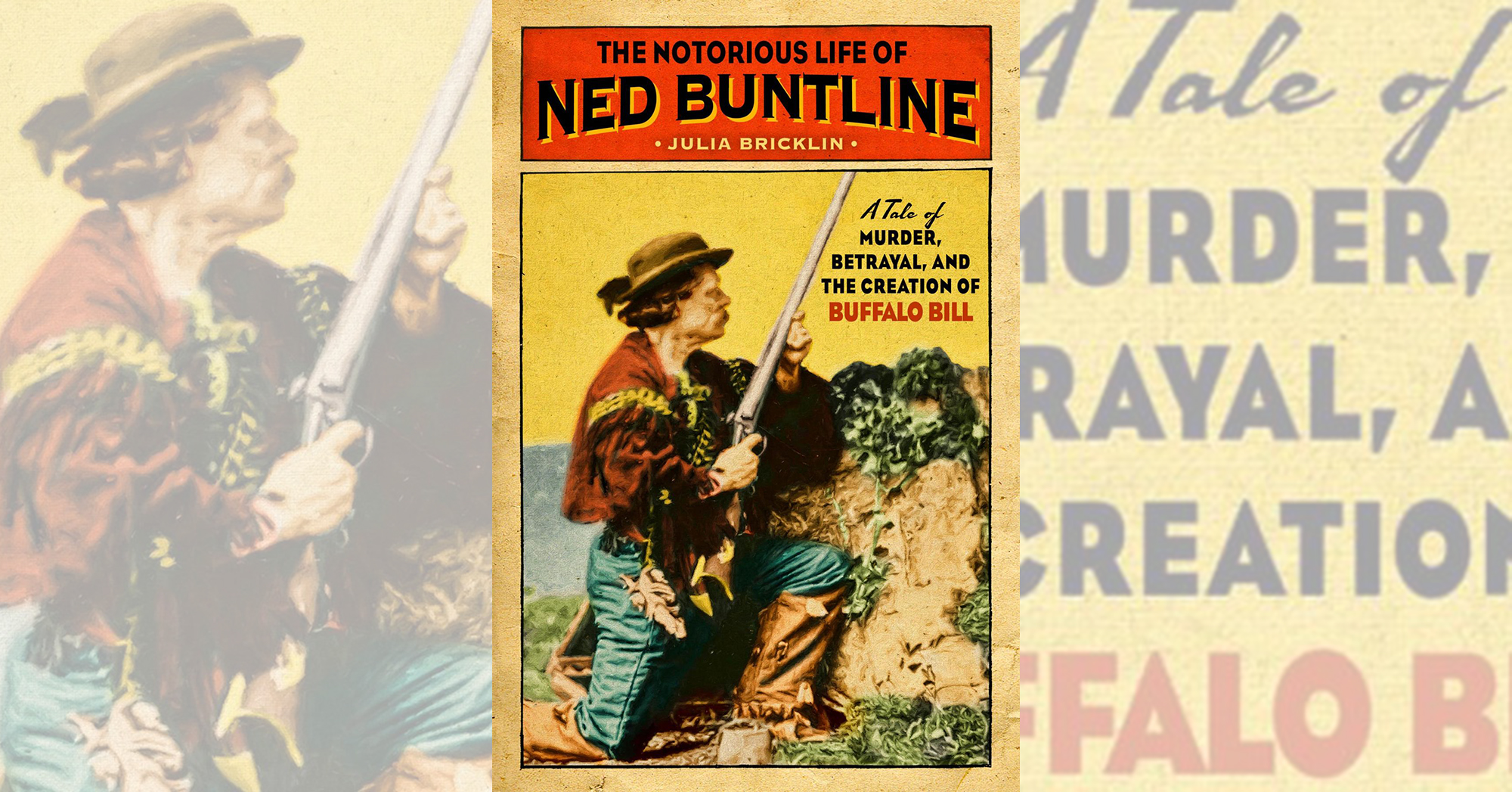The Notorious Life of Ned Buntline: A Tale of Murder, Betrayal and the Creation of Buffalo Bill, by Julia Bricklin, TwoDot, Helena, Mont., and Guilford, Conn., 2020, $26.95
In 1844 Edward Zane Carroll Judson took the pseudonym Ned Buntline (a buntline is a rope for securing the foot of a square-rigger’s unfurled sail), and he went on to become a larger-than-life figure, even as he did the same for William Frederick “Buffalo Bill” Cody. No, Buntline didn’t invent the moniker “Buffalo Bill,” but he did help elevate the Western scout to national fame with his 1869 serial novel Buffalo Bill, the King of the Border-Men, and in 1872 he convinced Cody to come east and perform in a play he’d written (The Scouts of the Prairie, and Red Deviltry As It Is). “Buffalo Bill, one of America’s brightest stars,” writes Julia Bricklin in her introduction, “came from one of its darkest minds.” His association with Cody is Buntline’s greatest claim to fame, but only four of his countless dime novels are about the onetime scout.
“Judson’s Westerns were a small part of his output, but they were the most enduring,” writes Bricklin, whose feature article “The Many Wives of Ned Buntline” ran in the February 2019 Wild West.
Yes, Bricklin has much more to say about Buntline’s many wives (at least eight) in this well-written biography. Buntline lived the last 15 years of his life in the Catskills with last wife Anna Fuller Judson, who was 30 years his junior, but when he died, two more women surfaced claiming to have been married to him. While Buntline specialized in adventure fiction, in his personal life he sought out real adventures. He fought Seminole Indians in Florida, served in the Union Army during the Civil War, helped instigate the bloody 1849 Astor Place Riot in New York City, became a leader of the Know-Nothing party and lectured against alcohol, though he was known to go on drinking binges.
Buntline was one of the most popular American fiction writers of the 19th century. “While his works did not display the literary artistry of Mark Twain or Nathaniel Hawthorne,” writes Bricklin. “they certainly rivaled or even beat Twain or Hawthorne in terms of contemporary readership.”
Historian and writer Clay Reynolds deemed Buntline’s pulp fiction “utterly horrid,” but Bricklin suggests the so-called “King of the Dime Novel” paved the way for popular writers Owen Wister and Zane Grey, who proved major forces in shaping the myths of the Old West. If nothing else Buntline was a bundle of contradictions. In Bricklin’s estimation he was a philanthropist, bibliophile, naturalist, proponent of law and order and supporter of civic institutions as well as a bigamist, slanderer, blackmailer, liar, deadbeat, philander, murderer and fugitive from justice. He was, she concludes, “the human embodiment of America’s complicated past and its struggles with racism, its treatment of native peoples and women, and its efforts to both tame and conserve natural resources.” How much Buntline helped “create” Buffalo Bill Cody, the most legendary Westerner of them all, is debatable, but there’s no doubt Buntline himself was a remarkable, albeit highly flawed, figure in his own right—if he didn’t say so himself.
—Editor
This post contains affiliate links. If you buy something through our site, we might earn a commission.





